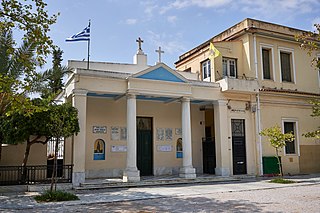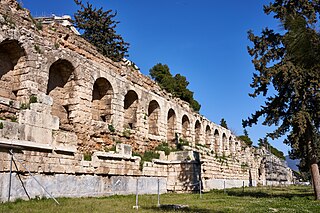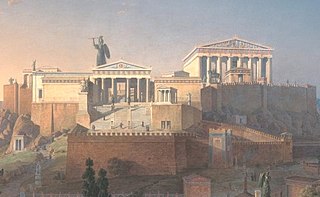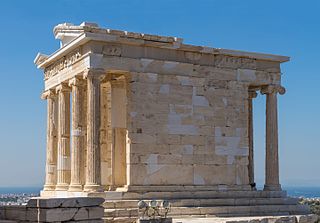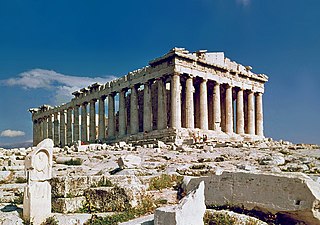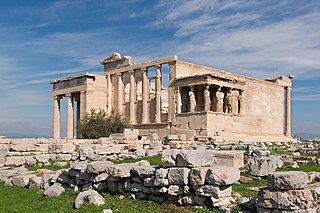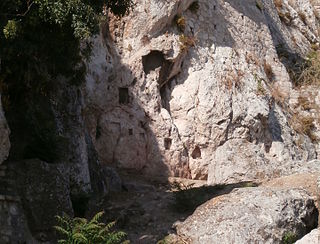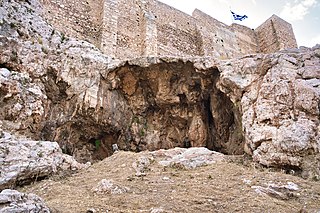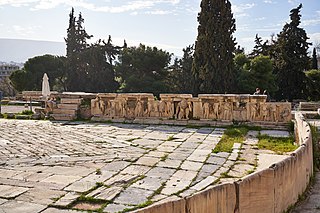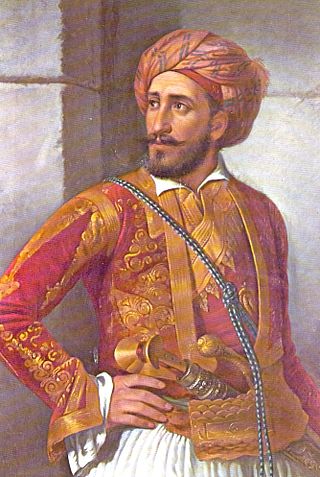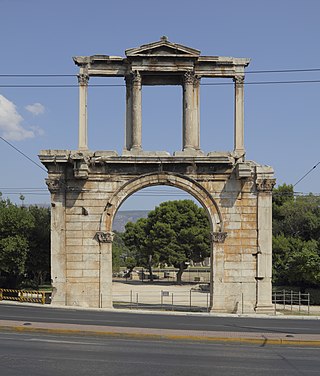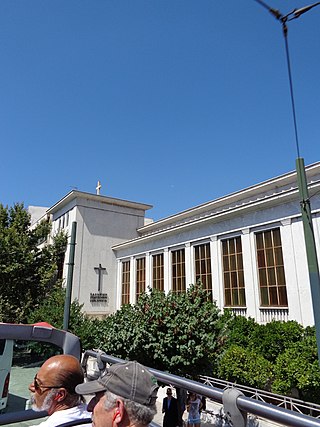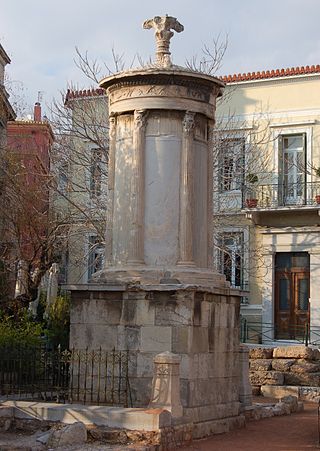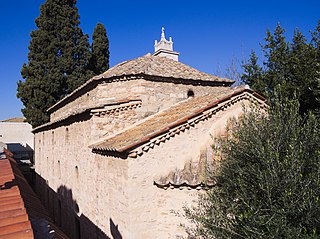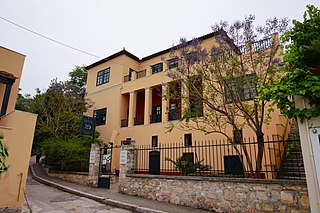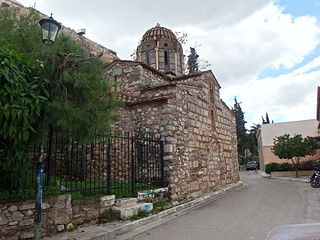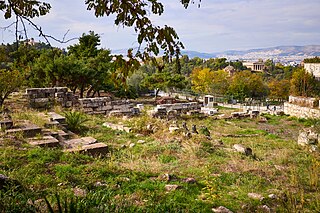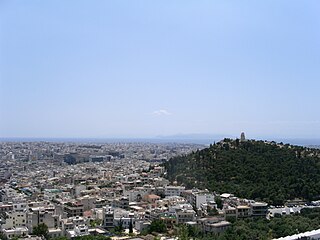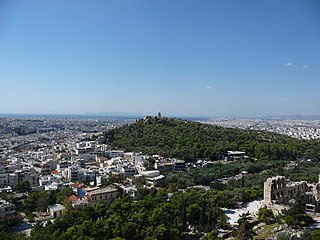Self-guided Sightseeing Tour #4 in Athens, Greece
Legend
Guided Free Walking Tours
Book free guided walking tours in Athens.
Guided Sightseeing Tours
Book guided sightseeing tours and activities in Athens.
Tour Facts
5.3 km
254 m
Experience Athens in Greece in a whole new way with our free self-guided sightseeing tour. This site not only offers you practical information and insider tips, but also a rich variety of activities and sights you shouldn't miss. Whether you love art and culture, want to explore historical sites or simply want to experience the vibrant atmosphere of a lively city - you'll find everything you need for your personal adventure here.
Activities in AthensIndividual Sights in AthensSight 1: Acropolis Museum
Get Ticket*The Acropolis Museum is an archaeological museum focused on the findings of the archaeological site of the Acropolis of Athens. The museum was built to house every artifact found on the rock and on the surrounding slopes, from the Greek Bronze Age to Roman and Byzantine Greece. The Acropolis Museum also lies over the ruins of part of Roman and early Byzantine Athens.
Sight 2: St. Sophia
The church of Agia Sophia, a single-aisled basilica, is located in Athens, at 45 Dionysiou Areopagitou Street and belongs to the Meropeio Foundation.
Sight 3: Stoa of Eumenes
The Stoa of Eumenes was a Hellenistic colonnade built on the South slope of the Acropolis, Athens and which lay between the Theater of Dionysus and the Odeon of Herodes Atticus The gallery was donated to the city of Athens by the king of Pergamon, Eumenes II, around 160 BC. Vitruvius makes reference to the building when speaking about the purpose of stoai erected near theatres that served as a refuge for the spectators in inclement weather conditions or as stores for theatre props.
Sight 4: Athena Promachos statue place
The Athena Promachos was a colossal bronze statue of Athena sculpted by Pheidias, which stood between the Propylaea and the Parthenon on the Acropolis of Athens. Athena was the tutelary deity of Athens and the goddess of wisdom and warriors. Pheidias also sculpted two other figures of Athena on the Acropolis, the huge gold and ivory ("chryselephantine") cult image of Athena Parthenos in the Parthenon and the Lemnian Athena.
Sight 5: The Temple of Athena Nike
The Temple of Athena Nike is a temple on the Acropolis of Athens, dedicated to the goddesses Athena and Nike. Built around 420 BC, the temple is the earliest fully Ionic temple on the Acropolis. It has a prominent position on a steep bastion at the south west corner of the Acropolis to the right of the entrance, the Propylaea. In contrast to the Acropolis proper, a walled sanctuary entered through the Propylaea, the Victory Sanctuary was open, entered from the Propylaea's southwest wing and from a narrow stair on the north. The sheer walls of its bastion were protected on the north, west, and south by the Nike Parapet, named for its frieze of Nikai celebrating victory and sacrificing to their patroness, Athena and Nike.
Sight 6: Pandion
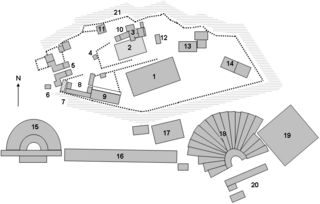
The Sanctuary of Pandion is the name sometimes given to the remains of a building located in the south-east corner of the Acropolis of Athens. Its foundations were found during the excavations for the construction of the Old Acropolis Museum (1865–1874).
Sight 7: Temple of Rome and Augustus
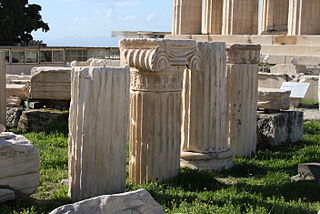
The Temple of Rome and Augustus was a small Ionic temple building on the Acropolis of Athens.
Sight 8: Parthenon
The Parthenon is a former temple on the Athenian Acropolis, Greece, that was dedicated to the goddess Athena. Its decorative sculptures are considered some of the high points of classical Greek art, and the Parthenon is considered an enduring symbol of Ancient Greece, democracy, and Western civilization.
Sight 9: Erechtheum
The Erechtheion or Temple of Athena Polias is an ancient Greek Ionic temple on the north side of the Acropolis, Athens, which was primarily dedicated to the goddess Athena.
Sight 10: Arriforion
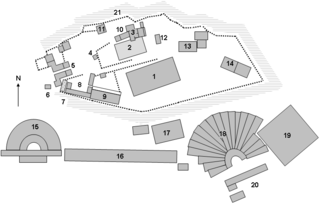
The Arrephorion or House of the Arrephoroi is a building conjectured to have been on the Acropolis of Athens based on a passage in Pausanias. The discovery of the foundations of a substantial building on the north-west edge of the Acropolis has led to the identification of this structure with the Arrephorion.
Sight 11: Pandroseion
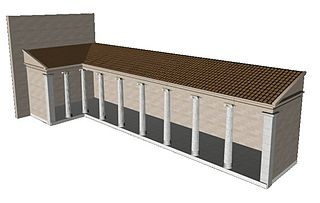
The Pandroseion was a sanctuary dedicated to Pandrosus, one of the daughters of Cecrops I, the first king of Attica Greece, located on the Acropolis of Athens. It occupied the space adjacent to the Erechtheum and the old Temple of Athena Polias.
Sight 12: Sanctuary of Eros and Aphrodite
The Sanctuary of Aphrodite and Eros was an ancient Greek sanctuary dedicated to Aphrodite and Eros, on the northern slope of the Acropolis hill of Athens.
Sight 13: Sanctuary of Aglauros
The Aglaureion, or the Sanctuary of Aglauros, was an ancient sanctuary located in the Acropolis in Athens, Greece. It was dedicated to Aglauros, a Greek mythological figure who was the daughter of King Cecrops and the sister of Erysichthon, Pandrosus, and Herse. The sanctuary was believed to be the site where Aglauros had sacrificed herself to protect the city from invasion.
Sight 14: Theatre of Dionysus
Get Ticket*The Theatre of Dionysus is an ancient Greek theatre in Athens. It is built on the south slope of the Acropolis hill, originally part of the sanctuary of Dionysus Eleuthereus. The first orchestra terrace was constructed on the site around the mid- to late-sixth century BC, where it hosted the City Dionysia. The theatre reached its fullest extent in the fourth century BC under the epistates of Lycurgus when it would have had a capacity of up to 25,000, and was in continuous use down to the Roman period. The theatre then fell into decay in the Byzantine era and was not identified, excavated and restored to its current condition until the nineteenth century.
Sight 15: Bema of Phaedrus
The Bema of Phaidros is the marble platform created in the third century CE that served as stage front to the Theatre of Dionysos in Athens. It is decorated with a Neo-Attic Roman sculpture of the Hadrianic or Antonine period, this sculpture was dismantled sometime in antiquity, moved from an unknown location, and rebuilt into the bema of the Theatre by Phaidros, archon of Athens. Four stone reliefs decorate the stage front illustrating scenes from the life of Dionysos they are: 1) The birth of Dionysos, 2) the entrance of Dionysos into Attica, 3) the sacred marriage of Dionysos and the Basilinna and 4) the enthronement of Dionysos. These scenes are framed by crouching Silenoi.
Sight 16: Yannis Makriyannis
Yiannis Makriyiannis, born Ioannis Triantaphyllou, was a Greek merchant, military officer, politician and author, best known today for his Memoirs. Starting from humble origins, he joined the Greek struggle for independence, achieving the rank of general and leading his men to notable victories, most notably the successful defense of Nafplio in the Battle of the Lerna Mills. Following Greek independence, he had a tumultuous public career, playing a prominent part in the granting of the first Constitution of the Kingdom of Greece and later being sentenced to death and pardoned.
Sight 17: Melina Mecouri

Maria Amalia "Melina" Mercouri was a Greek actress, singer, activist, and politician. She came from a political family that was prominent over multiple generations. She received an Academy Award nomination and won a Cannes Film Festival Best Actress Award for her performance in the film Never on Sunday (1960). Mercouri was also nominated for one Tony Award, three Golden Globes and two BAFTA Awards in her acting career. In 1987 she was awarded a special prize in the first edition of the Europe Theatre Prize.
Sight 18: Arch of Hadrian
Get Ticket*The Arch of Hadrian, most commonly known in Greek as Hadrian's Gate, is a monumental gateway resembling—in some respects—a Roman triumphal arch. It spanned an ancient road from the center of Athens, Greece, to the complex of structures on the eastern side of the city that included the Temple of Olympian Zeus.
Sight 19: Temple of Olympian Zeus
Get Ticket*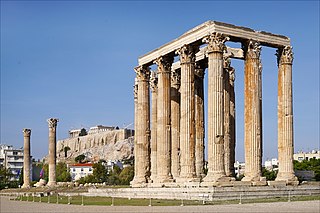
The Temple of Olympian Zeus, also known as the Olympieion or Columns of the Olympian Zeus, is a former colossal temple at the centre of the Greek capital, Athens. It was dedicated to "Olympian" Zeus, a name originating from his position as head of the Olympian gods. Construction began in the 6th century BC during the rule of the Athenian tyrants, who envisioned building the greatest temple in the ancient world, but it was not completed until the reign of Roman Emperor Hadrian in the 2nd century AD, some 638 years after the project had begun. During the Roman period, the temple, which included 104 colossal columns, was renowned as the largest temple in Greece and housed one of the largest cult statues in the ancient world.
Sight 20: Greek Evangelical Church
The First Greek Evangelical Church is the first official Protestant/Evangelical church established in Greece. Its ecclesiastical building is located in Athens, opposite Hadrian's Arch.
Sight 21: Choragic Monument of Lysicrates
The Lysikratus monument, also known as Diogenes' lantern, is a stone -built stone building, the best surviving sponsorship of antiquity. It is located in Athens, on the ancient Tripods Road and was built by Lysikratis in 335-334 BC. In order to support and highlight an important object at its top: the bronze tripod given to him as a prize for his role as a sponsor of the winning play in the latest dramatic struggles. The sponsors were wealthy citizens who took over the formation of the dance, that is, the group of people who participated in plays and official ceremonies. The bronze tripod was the first prize of the theatrical events and was awarded to the sponsor of the dramatic work. The tripods were assumed to the sanctuary of Dionysus or placed on the neighboring tripod road. In order to expose themselves in a more magnificent way, the tripods sometimes entered a high basis, which could be in the form of a column, or even a Naisse -shaped monument, such as that of Lysikratos.
Sight 22: Holy Unmercenaries
Saints Anargyri is a medieval church, in the Plaka district, in Athens, which is located on the northern footsteps of the Acropolis, on the contribution of Rectaniou and Erechtheus Streets. Its alternative name as Kolokynthos is associated with the Kolokynthi family, Athenian family, which is allegedly the owner of the monastery's area during the 17th century. From the 18th century until today, the site has been part of the Patriarchate of Jerusalem and is a metochi, while, in the past, the place of residence of Exarch, the Holy Sepulcher. It was erected during the 17th century, initially functioning as the Catholic female monastery, which included it. It is a single -aisled arched basilica with a cylindrical dome that was exclusively formed in Athens during the Ottoman period of domination, influenced by the Ottoman public buildings. It is built at the site of Aphrodite's earlier temple, as well as, according to tradition, on graves of members of the Paleologian family. In this temple, the Holy Light of Resurrection reaches first in Greece by Jerusalem. The day before becoming a magnificent Epitaph on the streets of the area.
Sight 23: Athens University History Museum
The Athens University Museum is a museum in Plaka, Athens, Greece.
Sight 24: Transfiguration of the Saviour
The Church of the Transfiguration of the Lord is a small Byzantine church in Athens, in the Plaka district, at the northern foot of the Acropolis. It was erected at the end of the XI century.
Sight 25: Eleusinion
Eleusinion, also called the City Eleusinion was a sanctuary on the lower part of the north slope of the Acropolis in Athens, Greece, dedicated to Demeter and Kore (Persephone). It was the central hub of Eleusinian Mysteries within Athens and the starting point for the annual procession to Eleusis, in the northwest of Attica. Religious activity is attested in the area from the 7th century BC and construction took place throughout late Archaic, Classical, Hellenistic, and Roman periods. The sanctuary was enclosed within the new city walls built after the Herulian sack of Athens in AD 267 and it remained in use until the late fourth century AD.
Sight 26: Philopappos Hill
Philopappou or Filopappou is a small neighborhood of Athens, Greece south of the Philopappos Monument, from which it takes its name.
Sight 27: Philopappos Monument
The Philopappos Monument is an ancient Greek mausoleum and monument dedicated to Gaius Julius Antiochus Epiphanes Philopappos or Philopappus, a prince from the Kingdom of Commagene. It is located on Mouseion Hill in Athens, Greece, southwest of the Acropolis.
Share
How likely are you to recommend us?
Disclaimer Please be aware of your surroundings and do not enter private property. We are not liable for any damages that occur during the tours.
GPX-Download For navigation apps and GPS devices you can download the tour as a GPX file.

